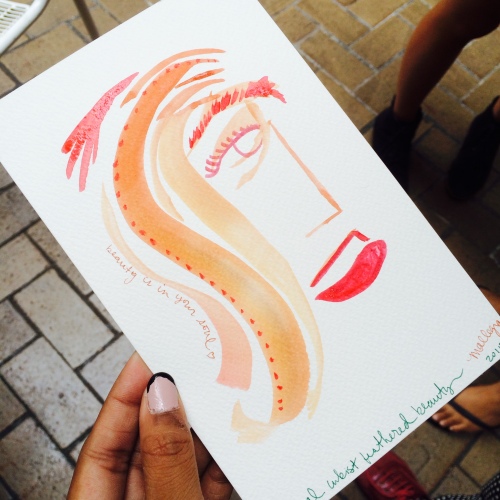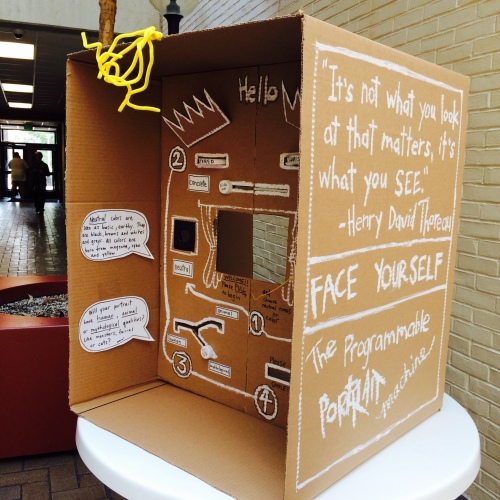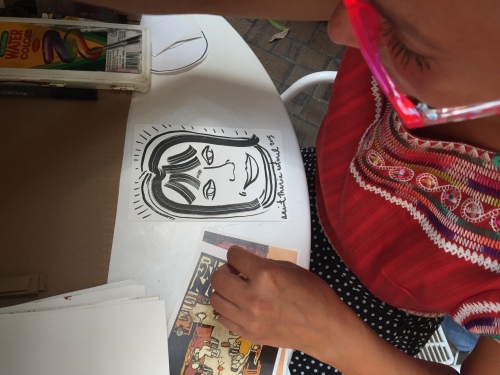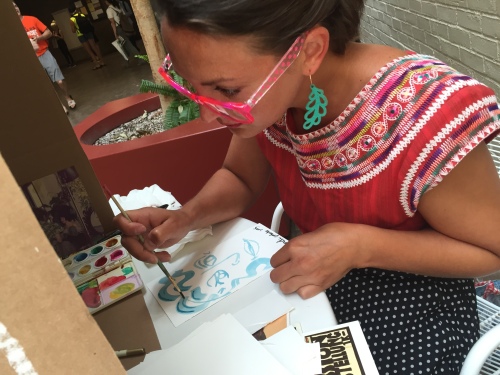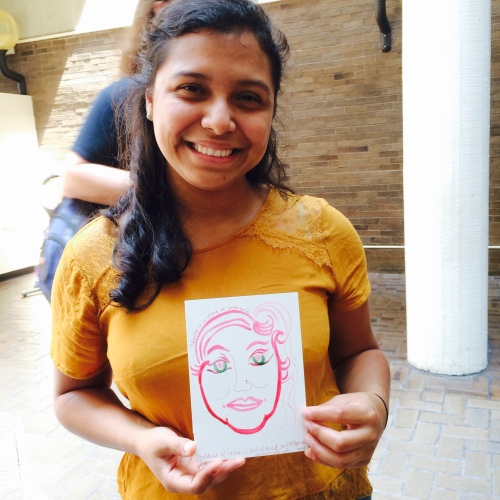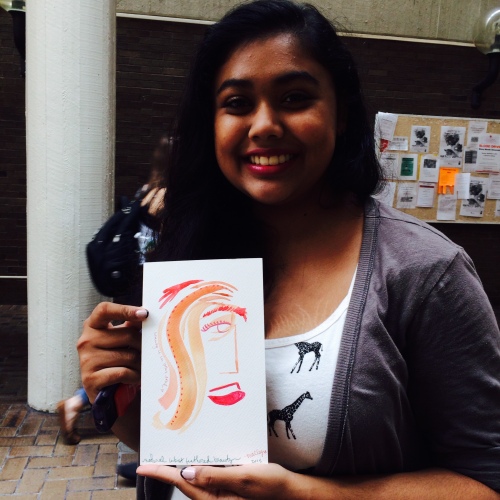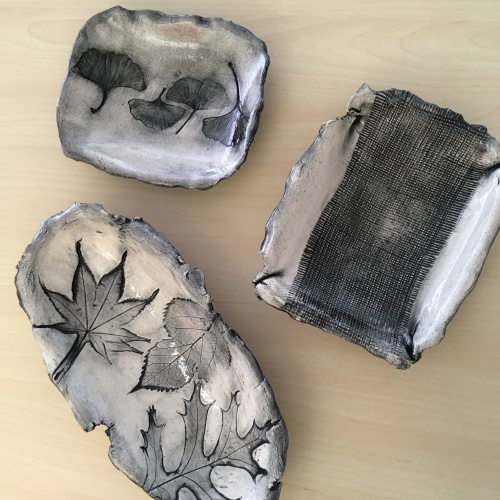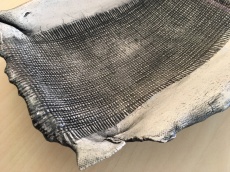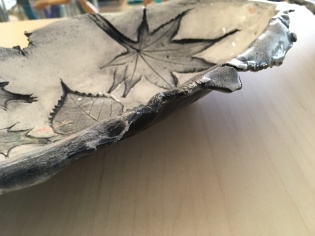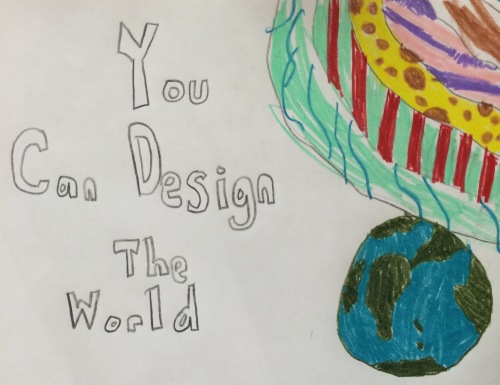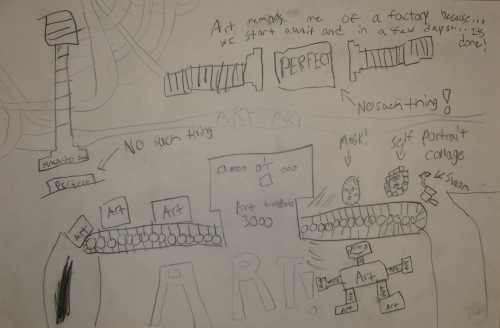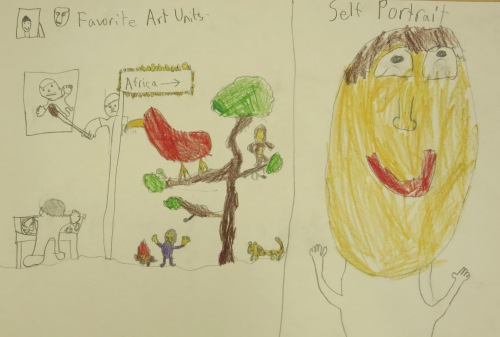Think about a time when you saw someone complete a task that made an impact on your creative brain, like witnessing a caricature artist at a street fair or a magician pulling off a mind-bending stunt. Would you offer your services and step in to create the next portrait or perform the following stunt?
Most likely not, right?
When we don’t have the technical training to complete the task at hand, why would we even think of offering our services? We might fail. We might feel embarrassed of our ability. We just don’t believe we can do it.
The feelings that arise when our ability is challenged are related to self-efficacy, or a person’s belief in his or her ability to succeed in a particular situation. In my own experience, when I am learning something new and I don’t believe that my hands and brain can accomplish the task, I am quite hesitant to try. Can you relate?
Have you ever witnessed a student doubt their ability before engaging in an art process? When I lead group discussions to introduce a new activity, students frequently ask the questions “What if I can’t do it?” and “What if I make a mistake?” These questions highlight a concern that is universal: our belief in our ability to complete a task and the repercussions of a possible failure. Students are so focused on the quality of their end product, that they lose trust in their ability to engage in the art process. How might our belief in our ability to engage in a process alter our art experience as well as our satisfaction with our end product?

On Instagram I came across a post by @ArtCartKids that caught my attention through a series of questions about comfort zones, risk taking and self-efficacy. The post involved an anecdote about how, while weaving a dreamcatcher with students, @ArtCartKids was surprised with how the children wanted a lot of direction; that they were more comfortable with the instructor leading a step-by-step instruction and were not comfortable trusting their own hands. @ArtCartKids then ended the post with these three questions:
“Do you think as children get older, and have more structure and direction in schools, this becomes their comfort zone?”
“Does their ability to take creative risks shrink?”
“Are they more concerned with right and wrong?”
As an educator who believes that student success is grounded in self-efficacy, I have decided to be more mindful of how I bring attention to the way we work through the art process. I have noticed the times when my instructional behaviors are more focused on the end product, and realize how I too play a role in perpetuating the focus of product over process.
As educators, what if we strived to model how our expectations are grounded in student discovery and growth rather than our opinion of their finished product?
We can begin by creating an atmosphere that values the art process. By simply leading discussions around how we make art and sharing the feelings we have when we make a mistake, we model the importance of art process. We can invite children’s ideas and concerns by offering questions focused around strategies for working and problem solving before an activity, such as: “How might we weave this paper through the warp to make a pattern?” or “What might we do if we get stuck?” Asking for student input allows learners of all levels to exercise their problem-solving skills as well as discover how they, not only the instructor, have access to meaningful ideas that impact their artistic ability. Furthermore, offering opportunities throughout the class period for the group to share out struggles and successes allows students to witness how they are all working artists and that their peers share similar concerns. When we use our studio time together to engage in discussions that are focused on our work habits, we are emphasizing the importance of the art process over the finished product through our modeled actions, not just our verbal messages.
Let’s pause and reflect for a moment on these ideas.
-If we truly value PROCESS, how might we make that clearly visible within our learning spaces?
-What questions, discussions and activities might we invite into the studio space that will help our students understand what they are physically capable of and how they might work through a struggle?
-As model educators, how might our current habits and language choices be both helpful to and hindering the growth of our students?
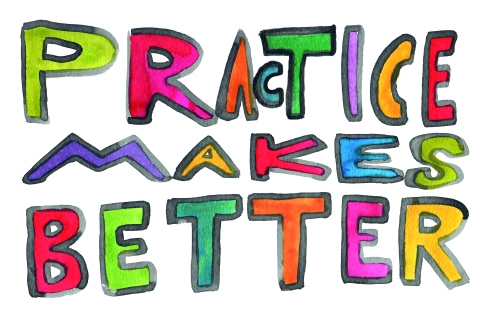
By reflecting on the questions above, we will begin to understand they ways in which we can build self-efficacy in our students and, in turn, strengthen their ability to be risk takers, not just direction followers.
We can also embrace these 3 habits to build self-efficacy in our students and children:
- SET CLEAR EXPECTATIONS THAT EMPHASIZE PROCESS:
Beginning each learning experience with a discussion about the expectations you have for working on a specific task or creative challenge sets the bar for how students should be using their time and energy. This can be as simple as stating what you might consider to be a known fact, but would benefit all types of learners. As an example, consider a simple activity in mark making using a brush:
“Today we want to discover all the possible types of marks a brush can make. We might act like a scientist or archaeologist would act if they just found this tool. There is no right or wrong way to work today because we are trying to discover all we can about how we might make use of a brush. Take note of what you discover so that we can share our new knowledge and make connections with others who have similar findings. Would anyone like to act out how they might use the brush? Let’s share two ways we can act as mindful artists today.”
In the words above, there is no discussion about what the marks should look like, or about what to do first, second or third. The expectations are grounded in discovery. Students are invited to wear their curiosity hat and are encouraged to ask questions and share what they find. Note how students are asked to consider how they might choose the use the tool and are also encouraged to consider mindfulness and safety before starting. This exploratory activity might take place before a painting unit where students will be invited to implement a variety of techniques focused around mark making, color mixing, layering, composition, etc. Offering a simple preliminary exploration of the tools we use supported by reflective discussions about our shared findings, will allow students to feel more in control and capable when they pick up a brush in the future.
When we offer directions on how to use a tool or comment on how a student chose to make a mark that was not what we suggested, we give a message that there is a right and wrong way. Doing this once in a while may be necessary. But if we tend to consistently give too many directives, students will come back to you asking: “Is this OK?”, “Is this good?”. Or they might even share an extreme response: “Is this what you wanted?” or “Do you like it?” Before offering directions, reflect on what your desired expectations are. With your words, be specific to the artistic behaviors you wish to promote based on your values of your art program and what you wish for your students’ growth.
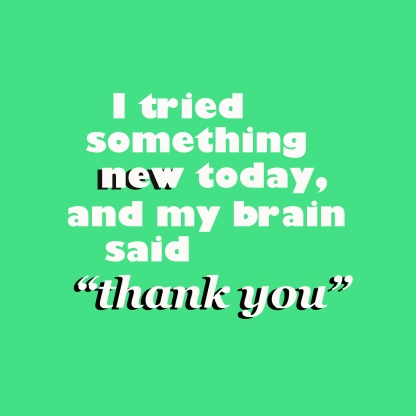
2. CELEBRATE STRUGGLES AND SUCCESSES:
Before starting any activity, invite students to share their own concerns and/or goals. When we ask questions like “How might we choose to use these tools today?” and “What might we do if we get stuck?” or “How might we care for our mixing tray?” we are modeling to students that we value their ideas and that the teacher is not the owner of all necessary information. We send a message that our studio is a community made up of diverse ideas, all holding equal weight. We commit to making sure that everyone is heard, everyone is seen and everyone is valued. When students are half-way through a class period and are messy in the process, I will often invite a pause and offer the opportunity for anyone who wishes, to share something they discovered, a struggle or concern they have, or a successful technique they have practiced. This allows students to practice feeling comfortable talking about their personal art process with others and also builds compassion and connections. Celebrating the times when we learn from our mistakes allows students to develop comfortability in messing up. By developing our comfortability in making a mistake, we increase our ability to reflect on it, unpack it and to learn from it. Learning from our mistakes leads to OWNING and BELIEVING in our ability which is the definition of self-efficacy! The more we name our struggles and mistakes, the more they will feel like common experiences and we will feel less avoidant when they happen.

3. CREATE A SELF-SERVICE CULTURE:
If you currently work with children, you are already aware of how capable children are. When we offer children the opportunity to be independent with a given task, they often go above and beyond our expectations. Now, consider the parent who is constantly tying their child’s shoes because they feel rushed and don’t want to spend the extra time waiting for a beginner to do the task. Or consider the teacher who tends to collect materials because they want them to be organized in a specific way. The message they are sending is clear: “You are not capable and efficient so please move aside and let me take over.” This action might just sneak up on us in a negative way when we wonder: “Why is ____ so incapable and lacking awareness? Why won’t____ unpack their bag or put away their laundry on their own?” These behaviors arise not because a child is uncaring, but because they simply have not been given the opportunity to practice! Furthermore, they might not even be aware of what to do or know of a successful way to problem solve due to a lack of opportunity.
What we can do as teachers and parents, is make a list of every single task that our children CAN do. There is no job too small. By offering children the opportunity to take on these tasks, it is quite possible that the parent or teacher will need to do some “elf work”, or offer adjustments behind the scenes afterwards. These adjustments are just a tiny task compared to the personal empowerment that is strengthened through practice in independence. In our school’s art studio, from age 3 and up, children are responsible for placing brushes in the “brush bathtub”, wiping tables with a zokien, a special towel, organizing pencils, markers, glue sticks and any other reusable materials, collecting paper scraps and reusable paper, collecting and organizing art on the drying rack and much more. Children want to be heard and seen and feel that they are capable. When I pose the opportunity as “Who would like to care for the studio?” All hands stretch high. I believe it stems from the language we use to describe the task. If anyone asked you to clean up, what is the first emotion that comes to mind? For me it might be “ugh, cleaning? I could be using my time to do___”. Now, consider how it might sound if someone asked: “Who would like to use a special towel to care for the tables?” or if you heard: “Who would like to save the unused papers from the trash?” What if we gave special treatment to our tools and asked: ” Who would like to give the brushes a bath?” or “Who would like to save the glue from drying out by making sure all the caps are on tight?”
Do you hear a tone of care and a bit of novelty in these questions? The next time you are about to speak aloud: “time to clean up!” pause and redirect your language to something that might specify the job at hand and incorporate a bit of humor and care. Imagine the ways you can use your language to transform a simple task into a meaningful rescue.
Let’s pause and reflect for another moment.
If you asked any educator “How do you want your students to benefit from your program?” What might they say? What might you say?
Consider how your classroom environment, instruction and the types of learning experiences you offer will support the growth of your students. Building self-efficacy will help students to be successful in all learning spaces and beyond. Holding true to our pedagogical values and being mindful of how these values are communicated in all we do, we can remember to:
SET CLEAR EXPECTATIONS,
CELEBRATE STRUGGLES AND SUCCESSES,
FOSTER INDEPENDENT HABITS,
and then
QUESTION, REFLECT, DISCUSS, and REPEAT
By leaning into to each new opportunity with these ideals in mind, we maintain a learning space that celebrates the potential in everyone. Every day we have the opportunity to encourage students to practice life skills that will support them in each new challenge they face. Let’s put children in the driver’s seat of their learning and give them the tools they need to look adversity in the face and say “I GOT THIS”.
Artfully,
MaryJo










